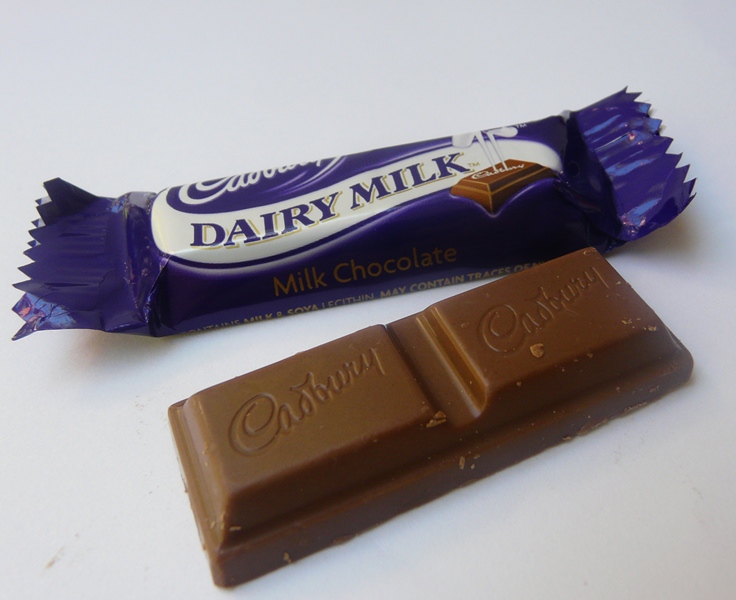- Home
- Blog
- Healthy Weight Loss
- 6 ways to beat a chocolate craving
6 ways to beat a chocolate craving
Written by Catherine Saxelby
on Tuesday, 19 October 2010.
Tagged: chocolate, cravings, healthy eating, overweight, portion size, weight loss

Craving some chocolate? It's sweet, smooth and divinely decadent. We know there are emotional triggers to cravings such as boredom, anger and depression as well as environmental cues such as walking past a chocolate display counter. But what can you do to prevent devouring a whole block that would destroy your day's diet?
1. Substitute a lower-fat form of chocolate
Sometimes you don't need to wolf down an entire chocolate bar with all its fat and sugar. You can still get the same choc hit from other chocolate-flavoured snacks or drinks that will satisfy the craving but without overloading you with kilojoules / Calories. Here's my pick of choc goodies:
- a mug of hot diet chocolate drink (Jarrah) or choc breakfast drink (Up N Go)
- a tub of diet choc mousse (Nestle)
- some diet choc topping drizzled over a scoop of ice-cream or custard
- a couple of low fat choc chip biscuits (Weight Watchers)
- chocolate coated nougat, Turkish delight, peppermint e.g. Darrell Lea Lite Peppermint chocolate. The thin enrobing of chocolate gives you a taste without drowning you.
- chocolate-coated muesli bar
2. Substitute something sweet instead of the chocolate-sweet
Try a handful of jellies or jubes or dried fruit. Or suck on a boiled sweet that takes a while to get through.
3. Scale down the portions you buy
Buy pre-wrapped individual chocolates so you don't face a whole block of delectable irresistible chocolate. Ideal things are Cadbury Milk Chocolate (20 g individual portions), Dove Promises (18 g) or Freddo Frog (15 g) or any fun-sized 20 g to 30 g mini-bar.
Give yourself permission to enjoy one a day without guilt. It won't ruin the nutrition of your whole day's intake. You can keep the pack in the freezer so you can't impulse eat. Just take out one for your weakest time e.g. the mid-afternoon slump or after dinner.
4. Eat chocolate mindfully
It helps you stop stuffing your face and pigging out! If you can slow down and savour the flavour, you stand a better chance of extracting the most satisfaction before you've wolfed down the whole block. Here's how:
Buy the best quality you can afford, sit quietly and make each mouthful last ONE whole minute.
Hold one piece of chocolate in your mouth and suck slowly. Let it dissolve in your mouth. Don't bite or chew.
Remember: quality is better than quantity!
5. Ask yourself WHY you're craving
Is the chocolate a stress-soother? Are you trying to remove unhappy or angry emotions? Since chocolate stimulates the release of serotonin, it's no wonder you feel calmer and happier after. If you always reaching for that chocolate bar when you're stressed, perhaps you can find other ways that work better for you as a person. For instance, listening to music, getting outdoors in the green space or calling a friend.
6. Switch to dark
Try eating 70% cocoa chocolate or higher as your 'chocolate treat'. Yes you get the choc hit but it's bitter so you can't eat a lot. The good news is you get more cocoa for less fat and sugar so you don't need to eat as much. I've found switching to dark does a lot to settle chocolate cravings and those feelings of 'addiction'.
Tip
After having your portion of chocolate, to prevent you going back for seconds, brush your teeth. The minty toothpaste gets rid of the taste that lingers and tempts you and it also makes your mouth feel fresh. Often it's enough of a good feeling to stop the craving.
Save
Save
You may also be interested in...
Foodwatch
The Good Stuff
The Boring Stuff
© 2025 Foodwatch Australia. All rights reserved
Website by Joomstore eCommerce






